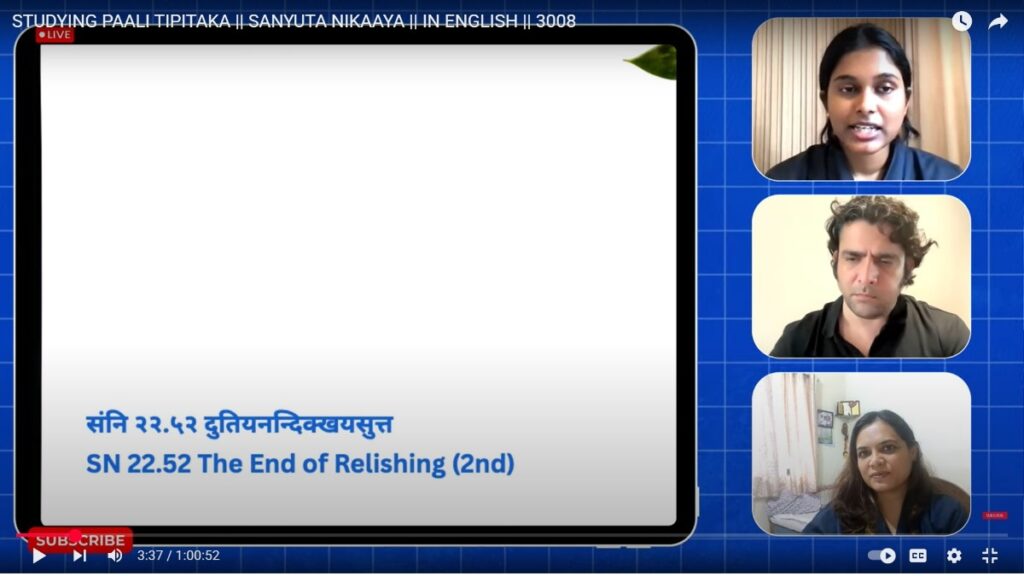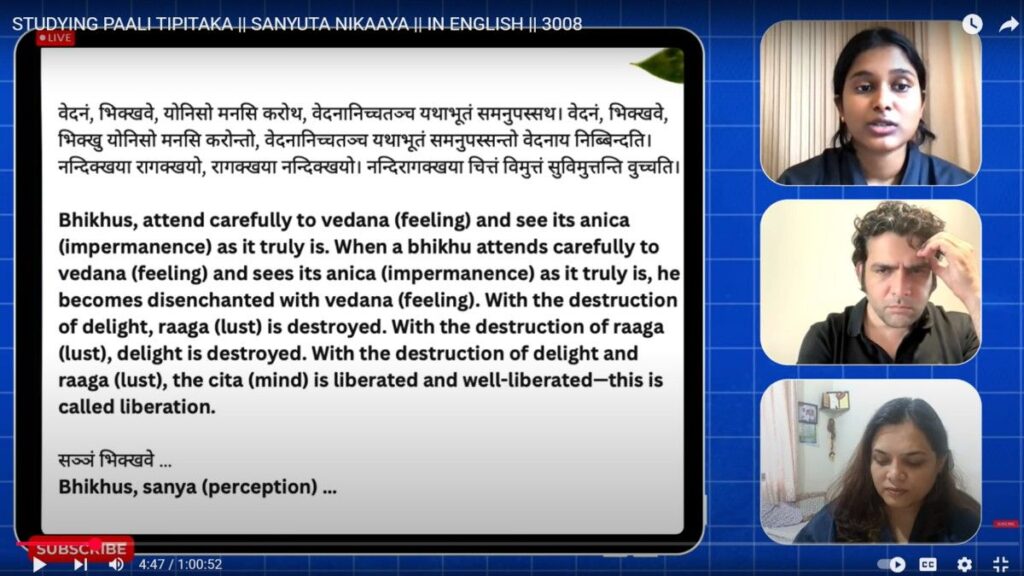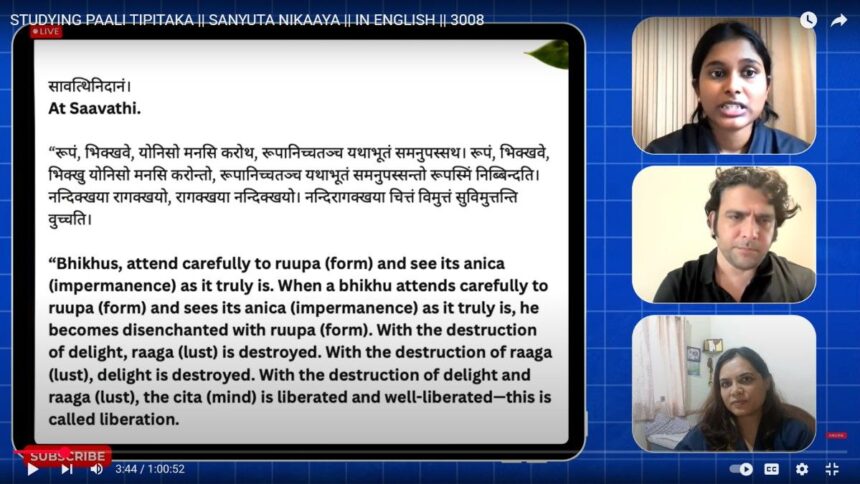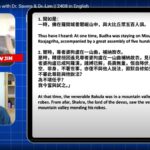Date: 30-08-2025
Location: Online Session
On August 30th, Dr. Rajesh Savera and Datuk Lim Siow Jin led a reflective online session on a profound teaching from the Samyutta Nikāya (22.52). The discourse centered on the importance of observing the nature of form (rūpa) with clear awareness, particularly its impermanence and instability.

Seeing Form as Impermanent
The Buddha emphasized that physical form—like all conditioned phenomena—is subject to arising and passing away. When one perceives the body as impermanent, fragile, and constantly changing, it becomes clear that clinging to it as “mine” or as “self” is a cause of suffering.
The teachers explained that this recognition is not meant to foster aversion toward the body but to cultivate wisdom-based detachment. By understanding impermanence directly, one gradually develops disenchantment (nibbidā)—a cooling of attachment and fascination with form.
The End of Craving
With disenchantment comes the diminishing of craving. Craving thrives when we imagine permanence or lasting pleasure in what is, by nature, fleeting. When this illusion dissolves, the pleasure associated with attachment loses its grip. As craving fades, so too does the cycle of grasping and suffering that it sustains.
The session highlighted that this process of letting go is not forced; it happens naturally through insight. Seeing the truth of impermanence again and again leads to release—both from subtle desires and from the deeper tendency to identify with the body and the aggregates.
Liberation Through Insight
Ultimately, the teaching reveals that freedom of the mind (vimutti) is rooted in seeing things as they truly are. When attachment to form and the enjoyment it brings comes to an end, the mind rests in clarity, calm, and liberation. This is not a theoretical idea but a practical path for anyone willing to cultivate mindfulness and sustained awareness.

Conclusion
Samyutta Nikāya 22.52 reminds us that liberation begins with clear seeing. By directly observing the impermanence of form, we loosen the bonds of craving and attachment. What remains is freedom—not dependent on external conditions but arising from insight into the nature of reality itself. The teaching encourages practitioners to look deeply, to see things as they truly are, and to walk the path of inner release with wisdom and compassion.
To watch full video click the below link
https://www.youtube.com/watch?v=Bb72vRTy3r8&t=288s




